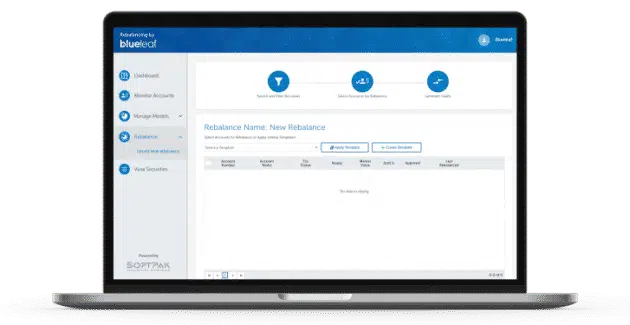Last Updated on November 2, 2021 by Carlo Navarro
Recently we wrote about why Rebalancing software is still terrible after all these years. Usability is so bad most wealth management firms still don’t use the tool. Those that do use it are sinking too much time and/or money into rebalancing and often getting less out of it than they should. So let’s talk about all the ways that rebalancing should be creating value for you and your clients.
Rebalancing Creates Value That Clients Should See
A key value that advisors provide is the ongoing monitoring and management of client assets. Unfortunately, that value-added activity often happens silently. Why?
Rebalancing is still a long and tedious process for many advisors that only occurs once or twice a year. Because it is a lot of work and needs to be flawless, advisors have little energy to focus on the opportunities inherent in that work. If properly presented, rebalancing reports show a client their advisor in action, working for them. And yet, due to the effort involved, once or twice a year rebalancing gives a too-rare glimpse into the value the advisor creates.
5 ways Rebalancing Software Should be Creating Value for You and Your Clients
1. Automating Monitoring Optimizes Timing and Frequency
Advisory firms have been stopping daily operations to crunch numbers on a spreadsheet just to get to the point of seeing what in their clients’ portfolios needs to be rebalanced. Automated drift monitoring allows an advisor to establish thresholds for how aligned clients’ portfolios are to models and then continuously track whether or not these accounts have drifted from these thresholds.
Automation allows this to be done on a daily basis, with no additional effort required. That means at any given moment, an advisor will know how closely aligned client assets are with their investment plan. It also means that rather than rebalancing based on the calendar, advisors can rebalance when assets have drifted too far. That creates an experience that is tailored to the client and the market rather than the calendar.
2. Automating Rebalancing Saves Time for Client Interaction
When a client’s portfolio drifts too far from its assigned model, automated rebalancing allows the advisor to approve the optimal trades to achieve alignment with the model. Thousands of possible permutations can be examined by the rebalancer in seconds, enabling advisors to take into account rules for things like specific securities to leave alone, cash minimums, and security equivalencies.
Automated rebalancing allows advisors to take actions quickly, executing recommended trades while still retaining control of trade review and approval. By removing all the work involved in calculating trades, automated rebalancing allows advisors to focus additional energy on communicating with clients.
3. Automating Household Rebalancing Enables Truly Holistic Advice
Holistic wealth managers have been offering advice on complex client situations with multiple accounts for years. Until recently, few rebalancing systems included them. And those that did were often complex and expensive. That meant that truly holistic wealth management was reserved only for the largest clients where the enormous manual effort or large expense could be justified. Even then, it had to be infrequent because it was just too much work.
With automated multi-account rebalancing, advisors can now set a group of accounts to a single target and they can be coordinated automatically to achieve a target allocation. With the right rebalancer, it is now as easy as rebalancing a single account. That means holistic investment management can be offered to all clients and truly differentiate advisors from less equipped competitors.
But what about all those clients that have assets that are held-away? It’s hard enough figuring out the rebalancing numbers for managed accounts.
Doing it manually including held-away accounts across an even modest book of business is nearly impossible.
Yet we talk about Holistic wealth management and advising on a client’s complete financial picture. For that to be accurate we cannot leave held-away assets out. By combining new approaches for data aggregation, better data integrity, integrated client communication, and automation, truly holistic rebalancing is now possible. Financial advisors should start to see it this year.
This is a game-changer. Clients have been through a roller-coaster ride this past year and a half — both in the stock market and in their personal and professional lives. They need reassurance that their money is well taken care of. All of it. Automating held-away rebalancing is the only way to do that.
4. Automating Tax-Aware Strategies Increases Returns
Managing tax exposure for clients is an important part of an advisor’s role. And leveraging tax-aware rebalancing can create value in two primary ways: asset location and tax-loss harvesting.
Optimizing asset location is only possible with a household or multi-account rebalancing system. Asset location prioritizes placing higher return, less tax-efficient assets in tax-deferred accounts. Household-level rebalancing software helps automate this by accounting for the differing tax-deferral priority among all the clients’ security types and may also account for differing priority among multiple tax-deferred accounts. Research suggests this creates about 25Bps.
Tax-loss harvesting by selling securities at a loss can either be used to offset gains in other securities or create capital loss (up to a limit) that reduces a client’s tax bill. Well-featured rebalancing software can help by recognizing these situations automatically and by recommending replacement with similar but not identical securities that helps maintain that target asset allocation without triggering the wash-sale rule. Research puts the estimated value of this between 15 and 25 Bps annually, with some studies putting it as high as 50 Bps in additional annual return.
By automating these two tax-aware strategies, rebalancing software can almost fully offset advisory fees for clients with taxable assets.
5. Automating Client Communication Drives Client Satisfaction and Growth
“If a tree falls in the forest ….” the old saying goes. For advisors, it might be better rephrased as “if it isn’t communicated to clients, did it happen? Did it matter? Did your client credit you with the value you’re creating?” The unfortunate answer here is most often no. Despite this, most advisors don’t regularly communicate what they do for clients, but rather focus solely on the outcome. Given the huge role investment management plays in most advisors’ businesses, that is leaving a lot of unrealized client value creation on the table.
Rebalancing software that generates client-friendly reports can help fill this void. Imagine your clients seeing every time analysis was performed on their investment portfolio. With automated rebalancing and monitoring, that happens every market day. Incorporating that into your client reporting means clients see you working for them daily. Automated rebalancing software can also produce reports that succinctly explain the analysis and the work done when rebalancing accounts for clients. If you also incorporate that into your client reporting, all the value you create will be recognized by clients. With great rebalancing software, it will all be automatically done as part of the system.
Automation and Communication are the Keys to Rebalancing Value
Most advisors rightly think of automation primarily as a mechanism to save time. That makes sense. But in the case of rebalancing, it’s different. The right rebalancing software actually creates value for clients and can help you clearly demonstrate the value you provide.

Sophistication without the Complexity
A streamlined interface on top of a market-leading engine, leaving you with a beautifully-designed rebalancing tool that will make your firm easier to operate.
